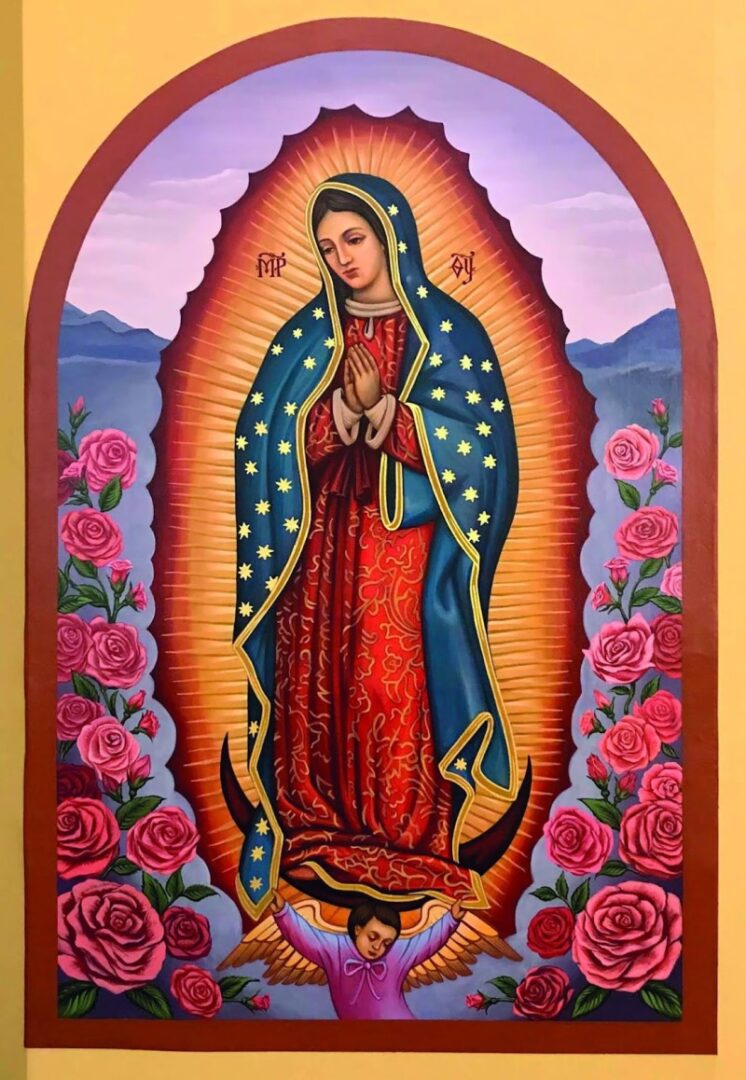As we continue through this season of Advent, waiting with joy and hope for Christ to come again in glory, we also remember on this third Sunday Our Lady of Guadalupe. Although devotion to Our Lady under this title is most popular in Mexico where she appeared, there is a growing devotion to her throughout all the Americas. That’s fitting since she has been declared the patroness of both of the American continents. She has also been named the patroness of the unborn, as is fitting since she is depicted with child in the famous image revealed on St. Juan’s tilma. (In the custom of the indigenous peoples, the black sash is a symbol of pregnancy).
Our nation is now holding its collective breath on a potentially landmark Supreme Court case that has just begun to be heard – Dobbs vs. Jackson Women’s Health of Mississippi. This case will likely be decided early next summer and could have a tremendous impact on how and whether unborn children will be protected in the womb, and whether the Roe v. Wade decision of 1973 (essentially legalizing abortion for just about any reason until birth) will be fully or partially overturned.
If that happens, then the decision on how to regulate the killing of children in the womb could be returned to the States, giving citizens an opportunity again to protect life at a more local level, without federal interference.
What does this have to do with Our Lady of Guadalupe? A little background. St. Juan Diego, the humble old peasant to whom Our Lady appeared, lived in what is now Mexico in the late 15th and early 16th centuries. In his lifetime, he witnessed the end of the era of the Aztec empire and the beginning of the Christianization of the indigenous peoples. The Aztecs practiced ritual human sacrifice that was deeply ingrained in the culture, part of the fabric of daily life. As a boy of 13, it is quite likely that St. Juan would have witnessed with his own eyes something truly horrible: the aged Aztec emperor building a 100-foot high pyramid to the god of the sun and publicly sacrificing on that tomb some 80,000 men within a week.
By 1520, after the Spaniards began to colonize Mexico, their ruler, Hernando Cortes outlawed human sacrifice. He had the temple stripped of its pagan idols, cleansed, purified, and dedicated it, and had a priest offer the holy sacrifice of the Mass on the very spot where the terrible human sacrifice had occurred. Thus, he replaced the ruthless sacrifice to pagan gods who can not save with the unbloody sacrifice of Jesus Christ on Calvary, who truly does save us from our sins. (For the full story, see the parish blog, sccrparish.blogspot.com, or the direct link to an excellent article on the topic at catholicexchange.com/with-st-juan-diego-to-the-merciful-mother )
But conversion takes time. The new Christian colonial government could and did attempt to overcome paganism by force, but true conversion happens not by force, but by the divine love of Christ reaching into the hearts of those He has saved. That is where Our Lady comes in. In her famous encounter with St. Juan Diego, she reached into the heart of this humble man who grew up in an era when human life was seen so expendable that it could be taken to appease the gods. She further revealed to Juan – and all the Mexican people – a different God – the one true God, three Persons in One, including her Son. This God-made-man came not cruelly to demand life – but rather to give life. To give eternal life in Communion with Him in Heaven. He loves us so much that He took our sins upon Himself and died for Our Sake. That is the very reason He took on human flesh in the womb of the Virgin Mary.
It is tempting for us to look upon the culture of the 15th and 16th-century as primitive and barbaric, much less advanced than we. But the reality is that we too have made the sacrifice of human life a deeply engrained ritual within our culture, deeply embedded in our way of life. While we no longer publicly display the actual taking of human life (as the Aztecs did in a grisly manner), we do embed in our culture the taking of the lives of infant children in the womb as a way of preserving the ability of men and women to enter into relationships not committed to marriage and sometimes even to preserve the convenience of lifestyles that we don’t want “interrupted” with children. The horrific numbers of tens of thousands of lives sacrificed by the Aztecs pale in comparison to the tens of millions of children we have lost in our nation.
And so we pray, through the intercession of Our Lady of Guadalupe, that just as the hearts of countless Mexican people were turned to Christ through her mediation, that the hearts of our own citizens will be turned to the protection of the innocent unborn. Ultimately, it will not be the courts that decide that, even the Supreme Court. But let us pray that this upcoming Dobbs court decision will be the first step in the true conversion of the hearts of our American people.
